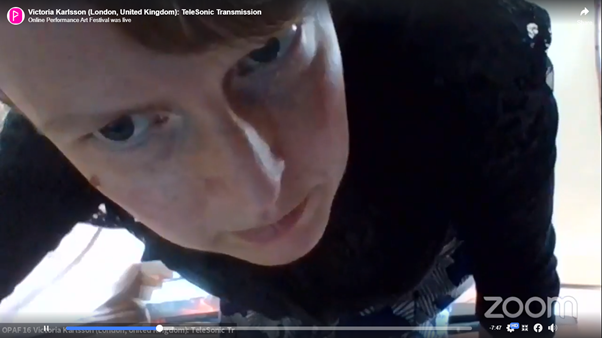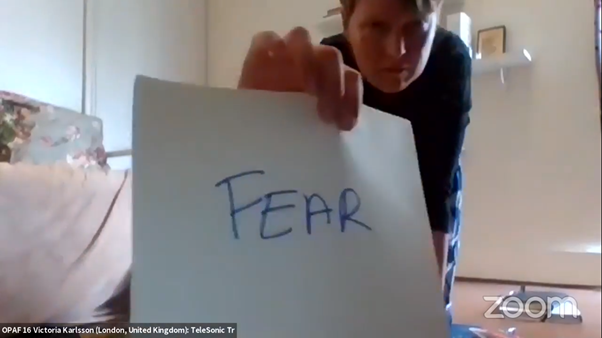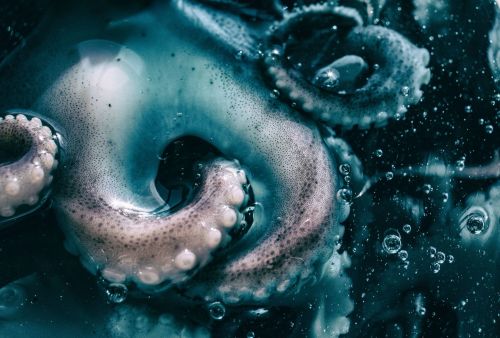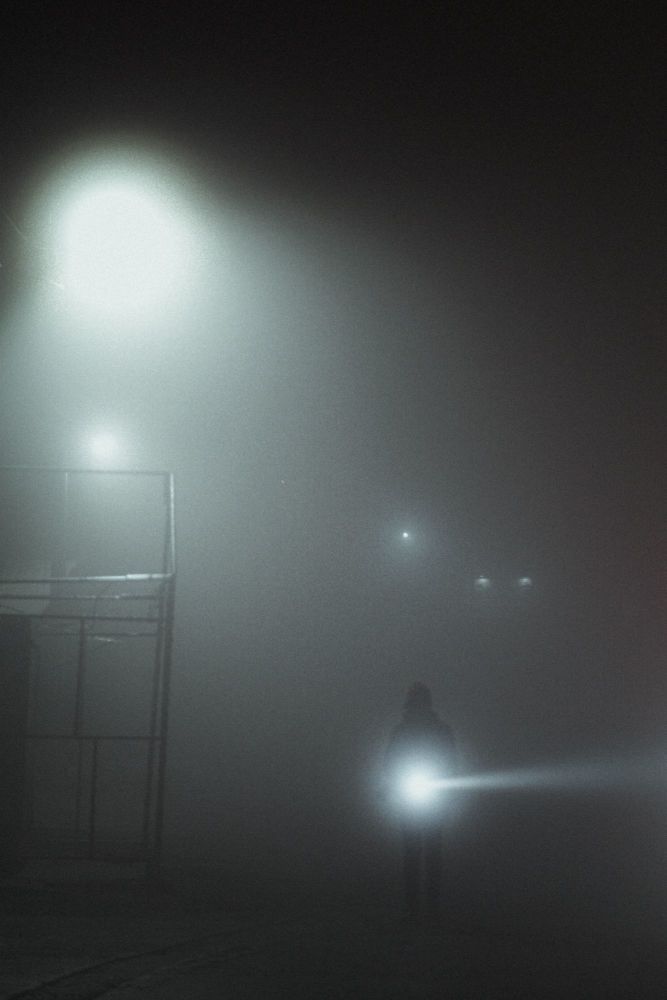telesonic transmission
Posted on
Last year, I did my first online, live performance – ‘Telesonic transmission’ as part of the amazing Online Performance Art festival. As many things, as I have been thinking about it afterwards, themes and ideas have emerged, which felt like they were floating around the periphery when the work was created. Now, with some time and reflection, they seem central to the work. As I am thinking about, he the future, developing these ideas and themes really excites me. I wanted to try and think through them in writing here.
Birds on Zoom
Early last year, as we were all getting use to Zoom and online meetings, I attended a (very lovely) writing workshop run by my university. The speaker, who often went silent to let us all write, had the sound of load and joyful birdsong in the background for the whole workshop. I remember how I thought, for a moment, the birds might be in my own garden. And even when I realised where the sound was coming from, I found it hard to accept that it was from someone else’s living room/garden. I realised how the medium of a Zoom call created little (sonic) intrusions into my world at home. And, I thought, the transfer or intrusion is the same the other way around - you are in my space, but I am also in yours.

Still from performance video - the artist crawling very close to the camera, her face filling the screen
Supernatural television
Lisa Blackman writes in ‘Immaterial Bodies’ of the early associations of television and clairvoyance. As she points out, the prefix ‘tele’ (from Greek, mean ‘from far, afar)’ – which television shares with telepathy and telekinesis, for example, ties it to early20th century ideas and beliefs around physic phenomena. (Blackman; ‘Immaterial Bodies’, p 70)
I thought again about that birdsong, and how it was beamed or transported into my house, outside of my control, along virtual pathways I knew nothing about. There was an interesting correlation there between my previous work on inner sounds, where I often played with the idea of getting into people’s heads, or people sharing inner experiences.
I had an idea of an obsessed inner listener, reaching out, finding a way to crawl along the invisible virtual networks. She would not only intrude into your house, but all the way into your mind…

Still from performance video - the artist holds up a white paperto the camera, with 'fear' written on it
The work, which is a live streamed performance, plays on these ideas. The audience sees me, and a large part of the space I am in. As the performance go on, I get closer and closer to the camera, often way to close for what has become ‘acceptable’ in our new Zoom age. They also hear my voice speaking to them, but without me actually speaking (it has been pre-recorded and is broadcast as a separate soundtrack) - much like I am speaking in your head.
Or maybe you are just imagining it?
The work plays on the intrusion into my space by you, the audience – but also my intrusion into your space (and mind?) sonically and otherwise. I am hoping in the future I can develop this piece further, even though the world might go back to ‘normal’ and the need for digital connections will not be the same.

